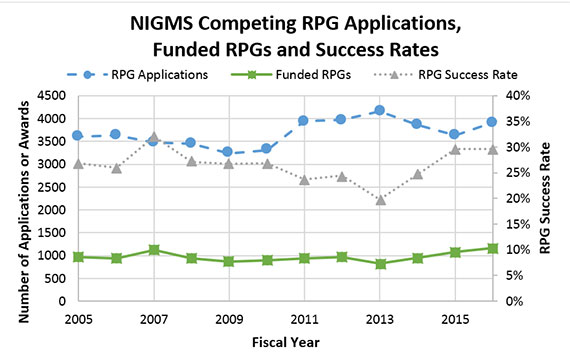Principal investigators (PIs) occasionally tell us they don’t plan to apply for the Maximizing Investigators’ Research Award (MIRA) program because their institutions expect them to have multiple R01 grants and thus they need to stick with R01 funding. To address this issue, we thought it would be useful to examine the likelihood of getting more than one NIGMS R01.
Figure 1 shows the percentage of PIs who held more than one NIGMS R01 between fiscal years 2014 and 2024 (FY14 and FY24). The first MIRA grants were awarded in FY16, so FY14 and FY15 represent years prior to the beginning of the program. In FY14 and FY15, only 16% of PIs had more than one NIGMS R01. This percentage hovered around 14-15% until 2019, when it began declining. The decline was likely the result of an increasing number of PIs converting their R01s to MIRAs and an Institute policy that PIs could not have more than two NIGMS R01s. Importantly, even before the MIRA program started, only a small fraction of PIs had more than one NIGMS R01. These data are consistent with an analysis we performed previously of how many early stage investigators (ESIs) who were awarded NIGMS R01s between FY04 and FY15 obtained a second NIGMS R01.
Continue reading “What Are the Chances of Getting More Than One NIGMS R01?”


